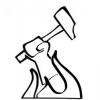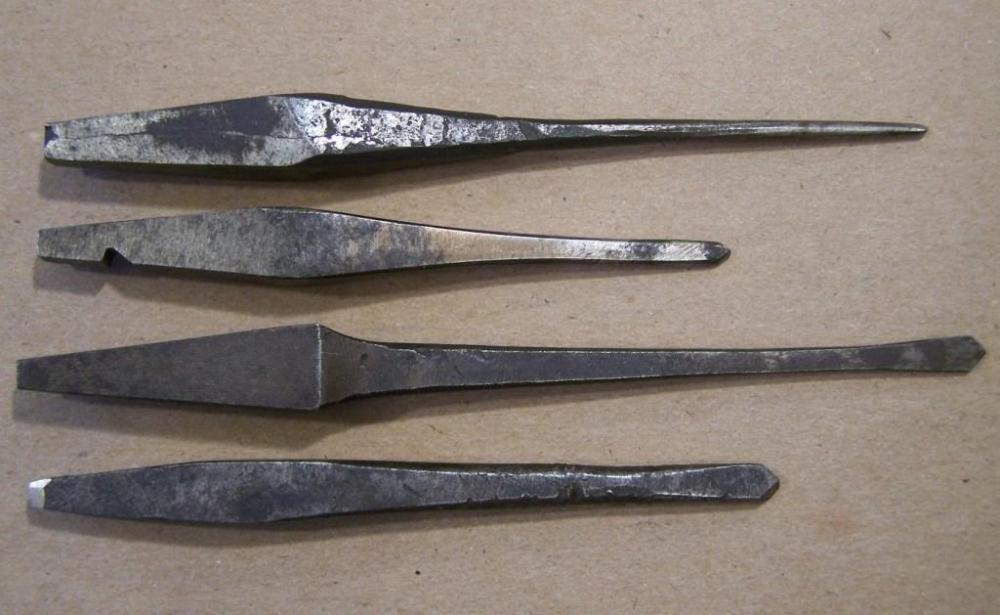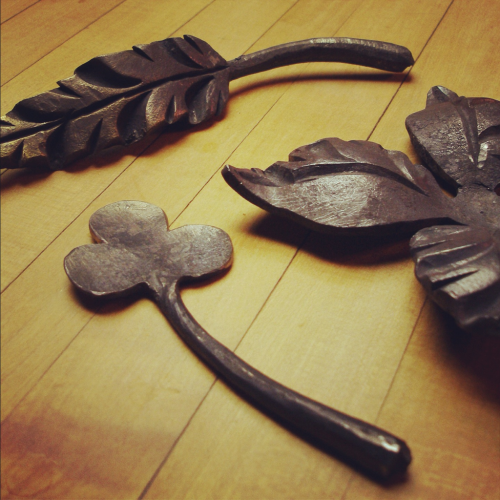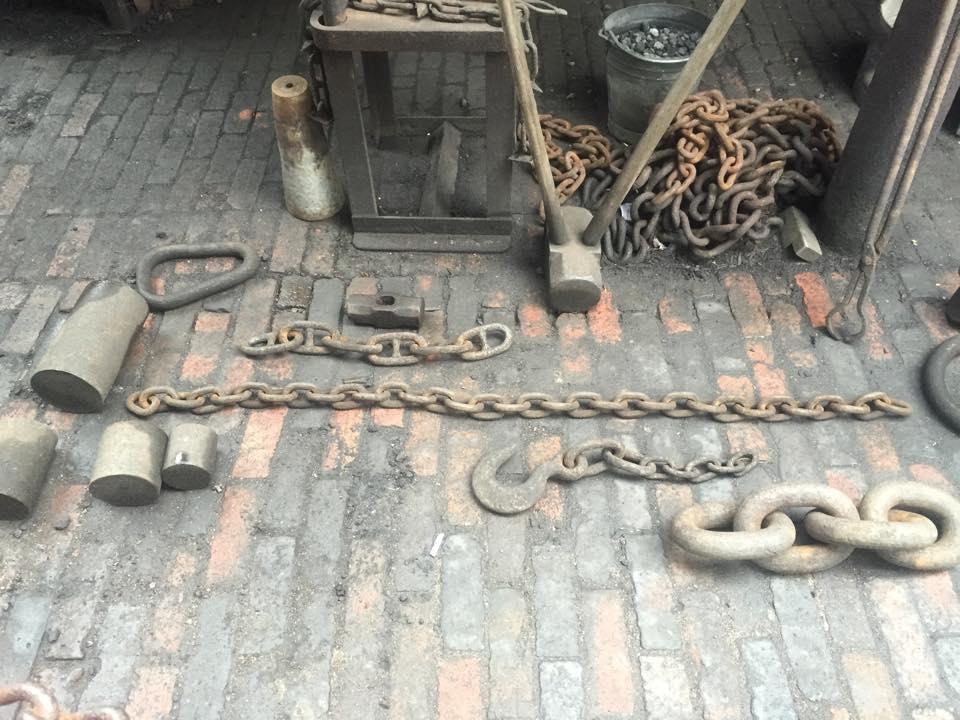-
Posts
23 -
Joined
-
Last visited
Converted
-
Location
Winnipeg
Recent Profile Visitors
The recent visitors block is disabled and is not being shown to other users.
-

Beam Drill - Information Request
mjenki replied to mjenki's topic in Drills, Post drills, Mag drills, etc
Thanks Wayne!! There is a lot of work in that one. Started working on one this weekend... attached the rough plans, but I am still open to pictures of more of them! Beam Drill.pdf -

Beam Drill - Information Request
mjenki replied to mjenki's topic in Drills, Post drills, Mag drills, etc
Hi ThomasPowers and Wayne, I have taken a look at both the Moxon and the Nicholson, but I was hoping someone had actually built a version. I just like to see variety. I have one sketched out and I understand the workings but if someone had a better idea / different site conditions... etc, that would be interesting.. Thanks -
Hi All, I am planning to build a "beam Drill" similar to the one depicted in Peter Nicholson's Mechanic Companion. (see the attached Picture, items D, E, and F) I am trying to learn from those who have tried making one of these and many google searches haven't revealed any modern reproductions. All search terms are pretty common and turn up the hand crank "post drill" and twist drills and auger bits.... but nothing for braces and drill for metal prior to 1860. I have found a really interesting thread on another forum... ( http://americanlongrifles.org/forum/index.php?topic=18949.0 ) that was really helpful about the bits, but nothing really about the rebuilding the brace or the beam levers. I just thought I would ask, to see if anyone has visited a historic site that has re-created something similar and has a few pictures or if anyone know of pictures of old metal drill bits.... Either way, should be working on this in the next couple weeks, I was hoping to cut down on my learning curve. Thanks in advance. Matt
-
Just looking for opinions, and curious if any one has noticed a change in your typical designs when you changed anvils. Now I understand that the whole point of blacksmithing is to make the material into the form we want, but I also understand that I tend to design to available tooling. Has anyone notice a extreme change in style based on changing out your main anvil? For the majority of my time working at an anvil, the anvil has been a London pattern anvil. I have had a chance to work at several styles over the years, some with out the cutting ledge, some double horns, some plain blocks, and smaller stake anvils. I know that I introduce elements more frequently that are easier to do on a double horn, than I would if I had to go to a secondary tool like dropping in a hardy on a London to do the same operation. I don't know if anyone outside of me notices, but I am curious if I am alone in this, or if if its something others have noticed. If so, Is this one of the factors that give regional differences in styles. ie East coast vs west coast.... or French vs English.... Just curious. Matt
-
Glad you guys appreciate it. I grew up in a small community named Cloverdale... so, its always been a shape that folks have asked me to make. I have been thinking on this a bit since I did the forge progression, and think that if it was done on the diamond, we could for get rid of the gate fuller and isolate the mass along the center line of the bar with half face blows only, (like a regular leaf). I don't think it really matters how the mass is isolated... but half face blows are pretty accurate and easy to do. I did make those dividers... but they are from a long time ago. I have improved my filing skills a lot since then. I keep them around to remind me, where I was and how far I have come... I also have one of my first tongs in the shop, but I'll never tell which ones they are.... Matt
-
Had some time so I did a quick forging progress, that my sketch described. Don't know if it helps any more or less to see it in real life. Matt
-
I haven't done any that have four leaves.... but I have done many of the 3 leaf variety. ( I am not lucky enough to accomplish 4.... they are so rare) The sketch shows the steps that I used and the picture is the result. Its pretty simple in its set up but when the estimating distance required for the the first half face blow... I always make the top lobe too long and have to cut some of it off before spreading in the last step.... if I get a chance, I'll do a photo step by step. Matt full disclosure: there is some clean up with a file after the last step, but it is minimal.
-
M Cochran, the book is "Hooks, Rings, & Other Things An illustrated Index of New England Iron 1660-1860" by Frank T. Barnes Many types of designs. 781 is correct about the threaded post versions and I would recommend that style for anything bigger than what I made... it was a little tricky/nerve racking getting the spring installed (back bending the base) while the spring was compressed. The pan pivot was done with a tenon and slot for a wedge. Worked great and made assembly and dis assembly easier. Hope that helps. https://instagram.com/explore/tags/cloverdaletrap/ Matt
-
This winter while I was working in the blacksmith shop at a local Festival in Winnipeg, I made a trap and took pictures at the end of each day. https://www.flickr.com/photos/cloverdaleforge/sets/72157651449217235/ Its not a bear trap size and doesn't have the spike/teeth, but it functionally its the same, and I learned a lot in the process. Hope that helps. Matt
-

Two Handled Sledge Hammer
mjenki replied to mjenki's topic in Power Hammers, Treadle Hammers, Olivers
So the picture posted by BlackFrog implies one of the smiths has to swing off-handed / switch hitter? That's pretty cool. -
I was recently asked to forge some chain, and I posted a pic of my progress... to which my sister, who lives in Rugby England, responded with some pictures of the Black Country Museum and one of the blacksmith shops there. In the photo there is a double handled sledge. I have heard of these... but I have never seen one in use... does anyone have a video or know more about them? I suspect that it is mostly lifted and dropped....or was it used with a master and apprentice one providing power and the other aiming... I don't know anything about it... figure someone here might... care to shed some light on the subject? Thanks Matt
-
Hi Larry, The first step I would take is changing the Font to something a little more... organic or script like. (see pic). Clients are usually receptive. You can avoid a lot of technical challenges with the swipe of a pen. If you are doing this design because a client is asking for it specifically asked for that design.... I would start at the center low point of the m and work outwards.
-

Has anyone made a sheep wagon door latch?
mjenki replied to LawnJockey's topic in Blacksmithing, General Discussion
Hi all, I made something similar but on a smaller scale for a dutch door hasp. (to join the top and the bottom halves of a dutch door) http://www.cloverdaleforge.com/post/65162845586/dutch-door-latch-complete-door-blacksmith-iron A google search under "dutch door hasp" will show several different variations. The image in the pdf, looks to function the same but with an extended handle for leverage. Maybe this different name will offer some new insight. The other option is that the hook and the handle both swing independently, and work like the available barn door hardware. Known as "draw latches" or "cam latches" '> Matt -

Looking for other Examples of this technique
mjenki replied to mjenki's topic in Blacksmithing, General Discussion
Frosty, I am really excited to see what variations are out there... I think a neat alternative would be to make only a single overlap chisel mark as well. for example ------------/------------- instead of the / / / / / / / / / that is shown in the picture. Sometimes "less is more"? Matt -
Hi all, I was working away on a shelf bracket a couple days ago... ...and to make life easier I make a deep (but not too deep) chisel mark to bend the right angle for the shelf bracket. I noticed that my chisel had jumped the groove ever so slightly (top left). I thought that has some potential. So, I did a test piece and purposefully jumped the groove (like they teach you to avoid, bottom left) and after the bend I got a "twizzler" looking thing at the corner. Does anyone have any pictures of past applications of this, or variations? I hoping to know some history behind this technique, if it has a name and how it has been used in the past. Was it that this is one of those ideas that works fine in mild steel and might be disastrous in wrought iron (due to grain) Like twisting, Its super simple to do, but gives some neat results, and has lots of potential for variation. Thanks Matt Jenkins www.cloverdaleforge.com




